Missoula's Historic Wilma Theater
This bitter cold night movie-goers just trickle in from Higgins Avenue. “Two for the Curse of the Yellow Flower,” one young man asks.
"It’s Curse of the Golden Flower,” says gray-haired Bill Emerson, with a hint of bruised pride in his voice.
Emerson has been the theater manager at The Wilma for 20 years. He’s worked for two owners and seen the theater he visited as a child go from the “Showplace of Montana” to an outdated relic and back again.
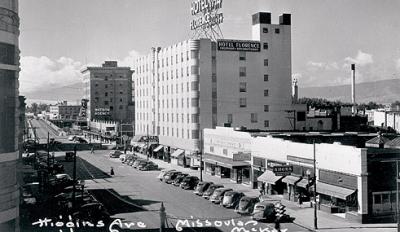
Built in 1921 by W.A. Simons, The Wilma was the premiere theater in the region, the flagship of the 11 theaters Simons owned around western Montana and Idaho. Simon’s wife, Edna Wilma, was half of the stage sister team “Edna and Edith Wilma,” and the Missoula theater’s namesake.
Downtown Missoula, then as now, revolved around the intersection of Front and Higgins, where the Hammond and Bonner families owned the buildings on the four corners. In 1921 when The Wilma was built there was nothing between the Hammond building (now the Hammond arcade) and the Clark Fork River, which ran much closer to downtown than it does today.
A channel of the river flowed through what is now Caras Park and necessitated the southern wall of the Wilma be a retaining wall to help guard not only the building itself, but downtown, from floods. That concrete barrier is four feet thick and plunges 42 feet down to meet the valley bedrock.
This precaution wasn’t unfounded, for in 1908 a 100-foot flood took out the Higgins Bridge, and then in 1947 a flood washed away an island just out from The Wilma that was slated to become a park. It was only after the Army Corps of Engineers built a dike to close off the channel in 1958 that the Wilma became only a building and not a barrier as well.
Despite its stately height standing watch over most of downtown and the secret strength of its walls, it is the interior of The Wilma that inspires most of the appreciation for the venerated old building.
The main auditorium seats 1,063 patrons in red, well-cushioned chairs. And regardless of whether they came to see a documentary film, a nationally touring punk-rock band or a ballet, there is plenty to see long before the show ever starts.
The ceiling is the largest hand-painted ceiling in the state and the walls, balconies, lobby and stairwells all feature one sort of elaborate decoration or trimming. The entryway is flanked with black Italian marble walls and the stairs leading to the balcony and restrooms have an overpowering brown and gold pattern than rather than assault the senses, somehow exudes luxury of a bygone time.
Emerson said the painting above the auditorium was last cleaned in the 50s and could use another wash, but because construction still slated for the building will just stir up more dust, it might be a while coming.
“You have to put scaffolding up for the whole thing,” he said, marveling at the difficulties of such an operation.
Edna Wilma Simon’s second husband Eddie Sharp was the owner of The Wilma most associated with the theater. Sharp married Wilma after returning from the second World War and presided over The Wilma during its popularity in the post war years up until Tracy Blakeslee bought it in 1996. Sharp, known in his declining years as a persistent, if not stubborn, owner ,was infamous for his hobby of feeding pigeons on the roof of the theater. Neighboring business owners were never too pleased about the increased amount of birds and corresponding mess.
Emerson said that Blakeslee has pumped three million dollars into the theater over the last 10 years, most of it spent rewiring the building to bring it up to code and installing a sprinkler system from the penthouse on the eighth floor to the boilers in the basement.
Unlike some of its neighbors in Missoula’s historic downtown, The Wilma has been spared from fire or other natural damage, according to retired University of Montana archivist Dale Johnson. The Florence Building on the Front St., Higgins corner burned in 1912 and again in 1936. The First National Bank (now First Interstate) on the Southeast corner of the intersection was torn down in 1959 following the Hebgen Lake earthquake near Virginia City.
In the 1890s the bars and bordellos, or “women’s boarding houses,” of West Front Street were ravaged by fire. Their close proximity to one another perhaps attributed to informal rules laid out for downtown by Missoula’s elite.
“The rumor is that the people who owned the mercantile, now Macy’s, wouldn’t allow saloons anywhere east of Higgins,” Johnson said.
True or not, to this day the vast majority of downtown watering holes are found on the sunset side of Higgins Avenue.
Though the center of historic downtown lies near the river, a few blocks away, in what used to be “the country,” sits the Worden home, built in the early 1870s, the oldest building left standing in the valley. It was home to one of Missoula’s founders, Francis Worden, and his family after he moved to Missoula from Hellgate trading post in 1864.
Many types of events are held in The Wilma, including amateur boxing matches, dances, and catered dinners. A few years ago a memorial service for well-known Montana author James Welch (Fools Crow, The Indian Lawyer) was held at the Wilma. “Tom Brokaw walked through the door just like anybody else,” Emerson said. “He wasn’t as tall as I thought he’d be.”
When the Wilma opened, there was a restaurant downstairs, which has gone through a few tenants and styles. Most recently, Marianne’s, operating in a yellow-walled, art-deco style space, was one of the premiere dining establishments in the state. Marianne’s has been gone for a few years, and now Creative Catering, a high-end Missoula catering service, rents out the kitchen, and the restaurant is used for special events, such as wedding receptions and convention dinners.
“It works out a lot better like this than it did when it was a seven day a week thing,” Emerson said.
When asked how the Wilma selects the films it will play, usually ones that can’t be found at the community multiplex, Emerson assures me, “We have the best movies. Not the ones with explosions. Not one’s with $20 million for an actor. That’s absurd,” he says.
A self-proclaimed movie buff, Emerson is proud of the one-off films they show, as well as the wide variety or foreign and subtitle films. “It’s a shame more people don’t take advantage of the films we have,” he says. “People don’t want to think.”
But plenty of film buffs do make for regular customers at the Wilma, and most of the people filing through the doors tonight ask about upcoming shows, all of which are answered with an affirmation of the film’s quality and an arrival date of “soon.”
Definite upcoming films include two of the biggest film festivals in the country, the Big Sky Film Festival and the International Wildlife Film Festival, the latter of which is in its 30th year. Some will be world premieres.
But Emerson’s affection is obviously not only for what goes on in the building, but the structure itself.
“I think it’s the most beautiful building downtown,” he says. “Every angle you look from, it has something to offer visually.”
Beyond the aesthetics, Emerson touts the acoustics of the main auditorium, which is without a single 90-degree abutment thanks to architect H.E. Kirkemo, who was sent to Europe for six months to study the great auditoriums of the Old World.
“The Wilma is in the top 10 in the nation acoustically,” Emerson says. “It’s as close as you can get to acoustically perfect. It’s better than Carnegie Hall.”
Now, Emerson says, with a new roof, improved insulation, top of the line electric systems and a world-class stage rigging, The Wilma is poised to entertain western Montana well past her 100th year and continue to win over patrons because the whole is so much more than the sum of her parts.
“You need a good foundation and a good roof, which are solid as can be. Then you go from there.”
~ Alex Strickland wasn’t born in Montana but got here as fast as he could. A native of Memphis, Tennessee, Strickland moved to Missoula to attend the University of Montana where he received a journalism degree in 2006.




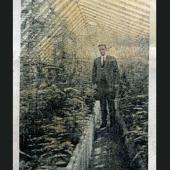
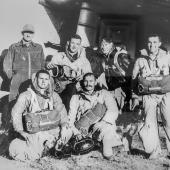


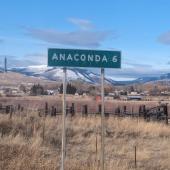


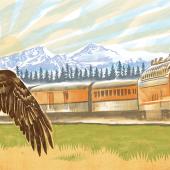
Leave a Comment Here